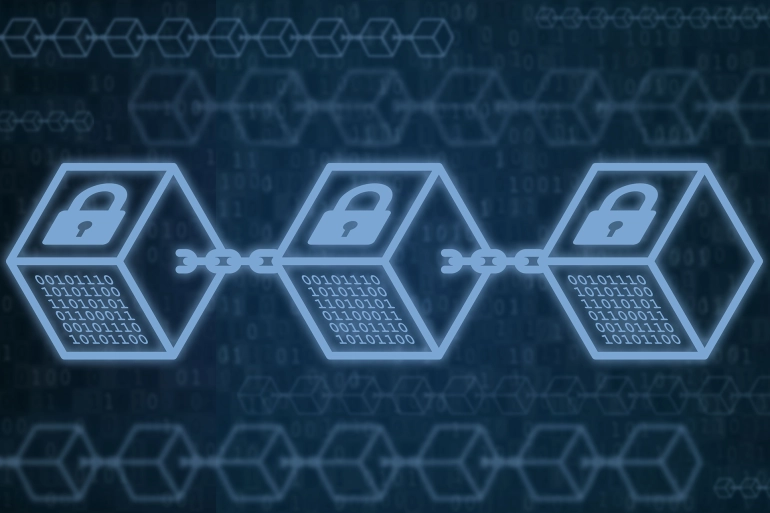Blockchain is defined as a distributed database shared between computer network devices, where each device is called a “node” and information is stored distributed on more than one “node” at the same time.
The “block chain” appeared in 1991 with the purpose of preventing the manipulation of timestamps, and in 1998 it was used for the first time in the digital payments system, and the first digital currency associated with the “block chain” appeared in 2009 as the beginning of the impact of this technology in all technological fields.
The “block chain” is also known as the “distributed ledger” technology, whereby digital trading data is preserved in this record according to its chronological sequence with no possibility of manipulation or deletion by any party.
How does "blockchain" work?
Blockchain works by integrating the roles of 3 elements: encrypted keys, a peer-to-peer (P2P) network and a digital ledger.
To clarify how these elements work, we must know that each "node" contains two encrypted keys, one public and the other private, and through these two keys each node has its own digital signature.
All the executed transfers are digitally signed by authenticating them over the peer-to-peer network by several "nodes", and after this process is validated, they are stored in the "digital ledger".
The "Digital Record" keeps the history of all transfers and allows everyone to view them. What is distinguished here is that the record does not give the ability to modify or destroy the stored information for any party viewing it.
In other words, the "digital record" is all the "nodes" connected to each other through the network, in which the information of transactions that take place between individuals is stored and kept securely.
Advantages and disadvantages of "blockchain"
Like any type of technology, “blockchain” has many advantages and disadvantages that must be considered…
Advantages
One of the main advantages of the “blockchain” lies in the high level of security that it provides, this means that it can protect and secure sensitive data and online transactions, in addition, it is suitable for everyone who is looking for fast and convenient transactions, because the transactions only take a few minutes until It is done while other methods take several days to complete, and there is no third party intervention to complete transactions such as banks, financial institutions, and government organizations, and this is what many users see as a real advantage.
Defects
Encryption - on which the "block chain" is based - uses two types of encryption keys, public and private, and according to what was reported, there are some problems with private keys.
In addition to another problem is “expansion constraints” as the number of transactions is limited, and so it may take several hours to complete multiple transactions and other tasks, and it may be difficult to change or add information after recording it, and perhaps the most serious flaw in the “block chain” is its use in activities It is illegal as it is mainly relied on in the dark web and the deep internet, which causes unwanted risks.
Blockchain technology has solved a lot of problems and created others, and it is possible that completely new solutions to the problems facing users will appear, and a new banking system will emerge with new changes based on the digital world in which we began to live.
The question that everyone asks is will the “blockchain” technology overcome the technical challenges and find a place for itself in the current digital environment, and will the appropriate solutions to the current problems be found and the “blockchain” officially adopted on a large scale?



